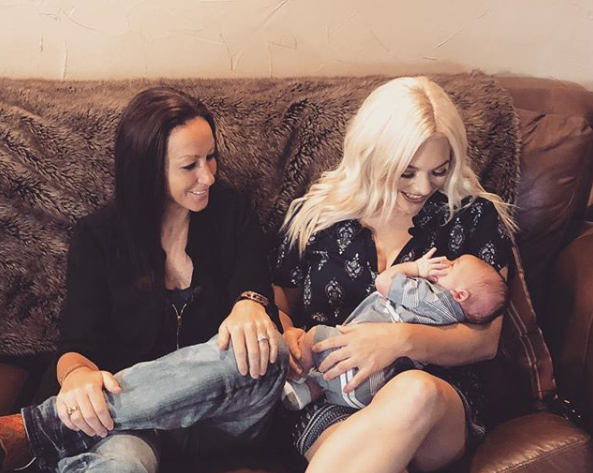Two women carry the same baby thanks to IVF procedure
Going through the IVF process can be tricky for same-sex couples: Who will supply the egg and sperm? Who will carry the baby?
But now one couple in Texas, US, found a way for both to take part.
Ashleigh and Bliss Coulter welcomed their son, Stetson, five months ago via IVF.
“I wanted to be pregnant for so long and so bad,” Ashleigh told NBC 5.
“I always wanted to have a child, I just didn’t want to carry the child,” Bliss said.
“Obviously, us being two women, we were like, ‘How can we make this happen?'” Ashleigh said. “We felt like there has to be a way.”
Love of my life!! @blisscoulter
A post shared by Ashleigh💋Coulter (@ashleigh.coulter) on Dec 18, 2017 at 6:13pm PST
The two ended up going to a fertility clinic that allowed them both to carry Stetson, and the process was similar to traditional IVF — with a twist.
“Bliss went through the stimulation of her ovaries and the egg harvest,” her doctor, Kathy Doody, told NBC 5. Typically at this point in IVF, a woman’s eggs would be fertilised with sperm and placed in an incubator in a lab to grow for a few days until they were implanted in the woman’s uterus.
Bliss’s eggs were put not into incubators but into the chamber of a device called INVOcell and then inserted in Bliss’s vaginal cavity for five days.
“She got the embryo off to an early start,” Kathy explained. “The eggs fertilised in her body, and when they returned five days later, we removed the device and froze the embryos.”
Then, an embryo was transferred into Ashleigh’s body. “Almost like passing the baton, like it’s a relay race,” Kathy said.
“[Bliss] got to carry him for five days and was a big part of the fertilisation, and then I carried him for nine months,” Ashleigh said. “So that made it really special for the both of us — that we were both involved. She got to be a part of it, and I got to be a part of it.”

The process is known as reciprocal effortless IVF, and it cost about $8,000 ($11,200 AUD), which is cheaper than traditional IVF.
It seems unusual, but Jessica Shepherd, a minimally invasive gynaecologist and founder of Her Viewpoint, believes using one mum as a form of an incubator “might be better physiologically” than the standard method of IVF.
Doctors need to put the developing embryo into a device temporarily, because it “needs to be contained in something,” Jessica tells Yahoo Lifestyle. “Then, when it’s time to retrieve it, doctors are able to find it easily.”
Just like more traditional forms of IVF, there are risks with reciprocal effortless IVF.
“Any time you have a transfer, whether from a petri dish or from a device to the other uterus, there’s a risk the egg or embryo can be lost,” Jessica says. The overall health of the moms matters here too.
“That can dictate how well the pregnancy does.”
Overall, though, Jessica says this is a “viable option for couples to discuss if they both want to be a part of the process.”
Bliss and Ashleigh are believed to be the first same-sex couple to carry the same baby. However, a second same-sex couple went through the same procedure at the same clinic subsequently, and had a healthy baby in September.
Got a story tip? Send it to tips@oath.com
Want more lifestyle and celebrity news? Follow Yahoo Lifestyle on Facebook, Twitter and Instagram.
Or sign up to our daily newsletter here.

 Yahoo Lifestyle
Yahoo Lifestyle 
